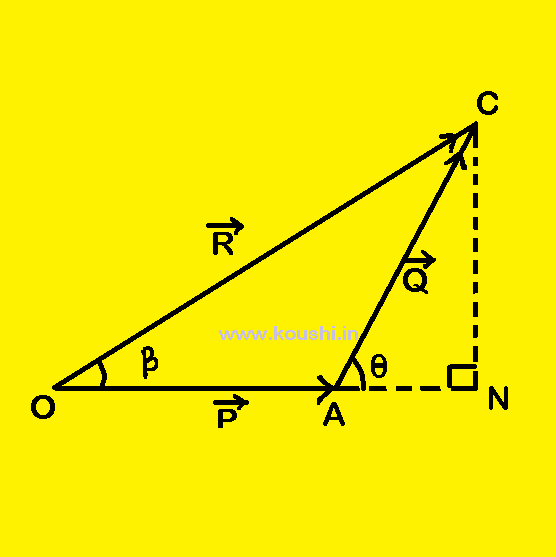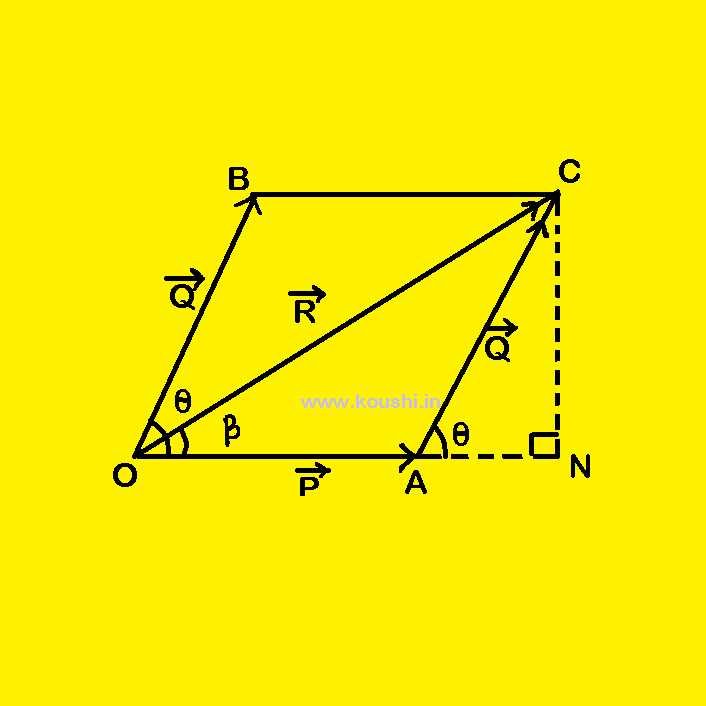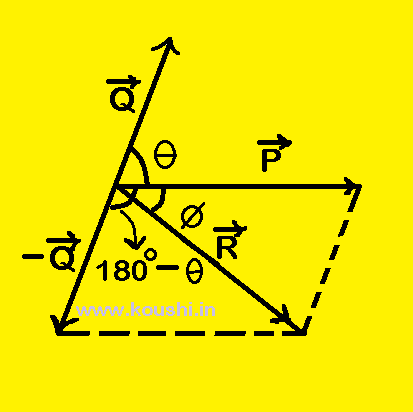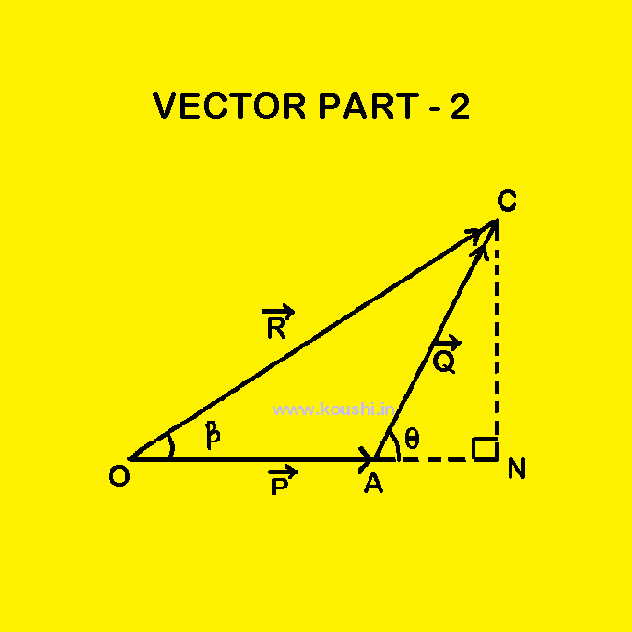Triangle law of vector addition:
Statement: If two vectors are represented both in magnitude and direction by two sides of a triangle taken in the same order, then the resultant of these vectors is represented both in magnitude and direction by the third side of the triangle taken in the opposite order.
Prove: Let us consider ![]() and
and ![]() acting simultaneously on a particle be represented both in magnitude and direction by two sides OA and AC of
acting simultaneously on a particle be represented both in magnitude and direction by two sides OA and AC of ![]() OAC taken in the same order.
OAC taken in the same order. ![]() is the resultant of
is the resultant of ![]() and
and ![]() is represented by side OC. So,
is represented by side OC. So, ![]() =
= ![]() +
+ ![]()
CN is the perpendicular on ON and θ is the angle between ![]() and
and ![]() .
.
In right-angled ![]() ONC, OC2 = ON2 +NC2
ONC, OC2 = ON2 +NC2
Or, R2 = (OA + AN)2 + NC2
Or, R2 = OA2 + AN2 + 2OA.AN + NC2
Or, R2 = OA2 + AN2 + 2OA.ACcos![]() + NC2
+ NC2
![]() R2 = OA2 + AC2 + 2OA.ACcos
R2 = OA2 + AC2 + 2OA.ACcos![]()

[From right-angled ![]() ANC,
ANC, ![]() =
= ![]() so, AN = AC
so, AN = AC![]() and AN2+ NC2 = AC2]
and AN2+ NC2 = AC2]
![]() R2 = P2 + Q2 + 2PQ
R2 = P2 + Q2 + 2PQ![]()
Let us consider ![]() creates angle
creates angle ![]() with
with ![]() . Then from right-angled
. Then from right-angled ![]() ONC,
ONC, ![]() =
= ![]() =
= ![]() =
= ![]()
Or, ![]() =
= ![]() [From right-angled
[From right-angled ![]() ANC,
ANC, ![]() =
= ![]() ].
].
Parallelogram law of vector addition:
Statement: If two vectors are represented both in magnitude and direction by two adjacent sides of a parallelogram drawn from a point, then their resultant will be represented both in magnitude and direction by the diagonal of the parallelogram drawn from that point.
Prove: Same as triangle law.

Subtraction of vectors:
Let us consider ![]() and
and ![]() creates angle θ. To subtract
creates angle θ. To subtract ![]() from
from ![]() we can write
we can write ![]() + (-
+ (- ![]() ) [where –
) [where – ![]() is the opposite vector of
is the opposite vector of ![]() ]. The angle between
]. The angle between ![]() and –
and –![]() is (180 – θ) and
is (180 – θ) and ![]() is the resultant of
is the resultant of ![]() and –
and – ![]() .
.
The magnitudes of ![]() is R2 = P2 + Q2+2P.Q
is R2 = P2 + Q2+2P.Q![]()
Or, R2 = P2 +Q2– 2PQ![]()
If ![]() creates angle
creates angle ![]() with
with ![]() then tan
then tan![]() =
= ![]()
![]() tan
tan![]() =
= ![]() .
.

